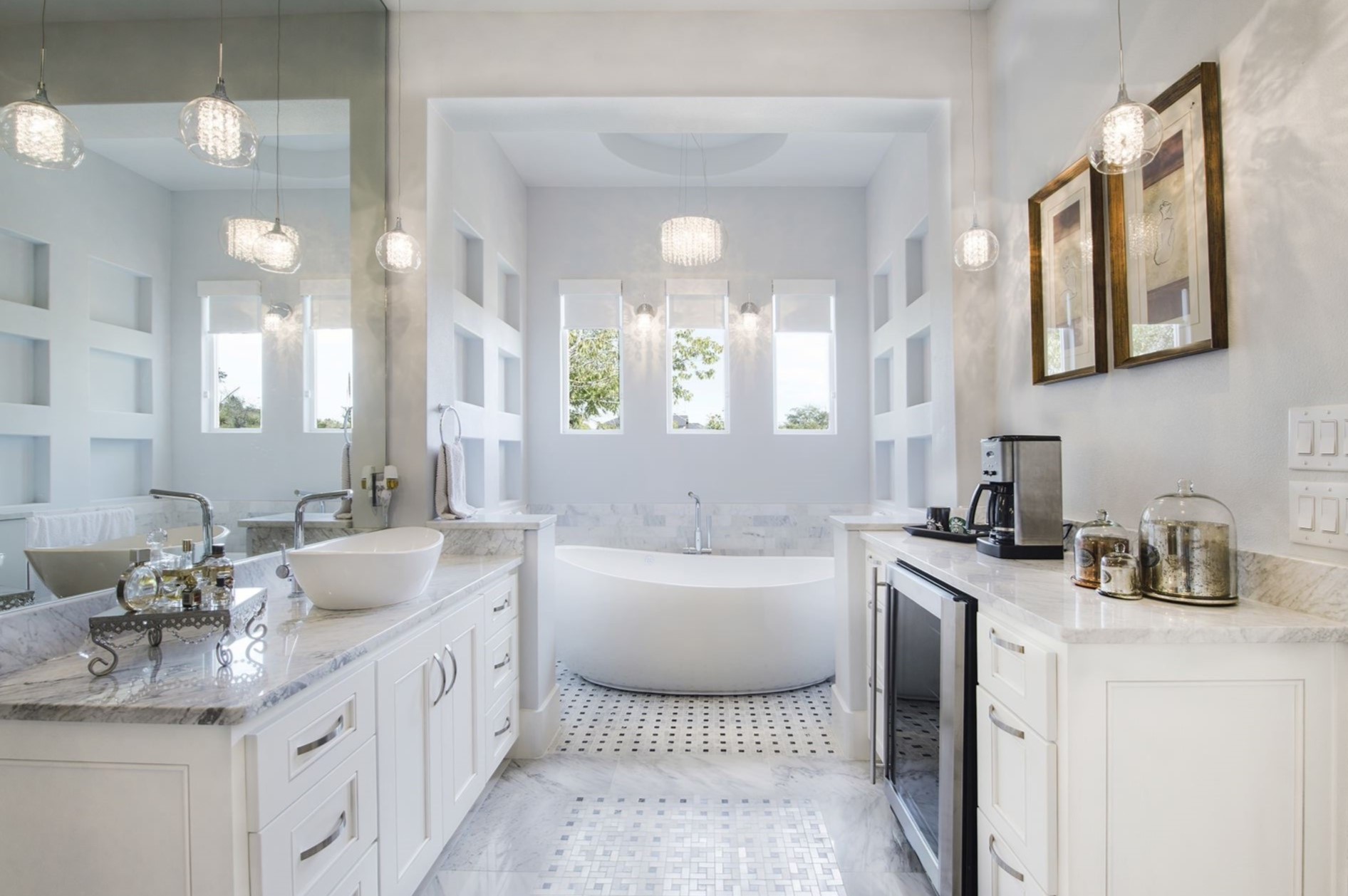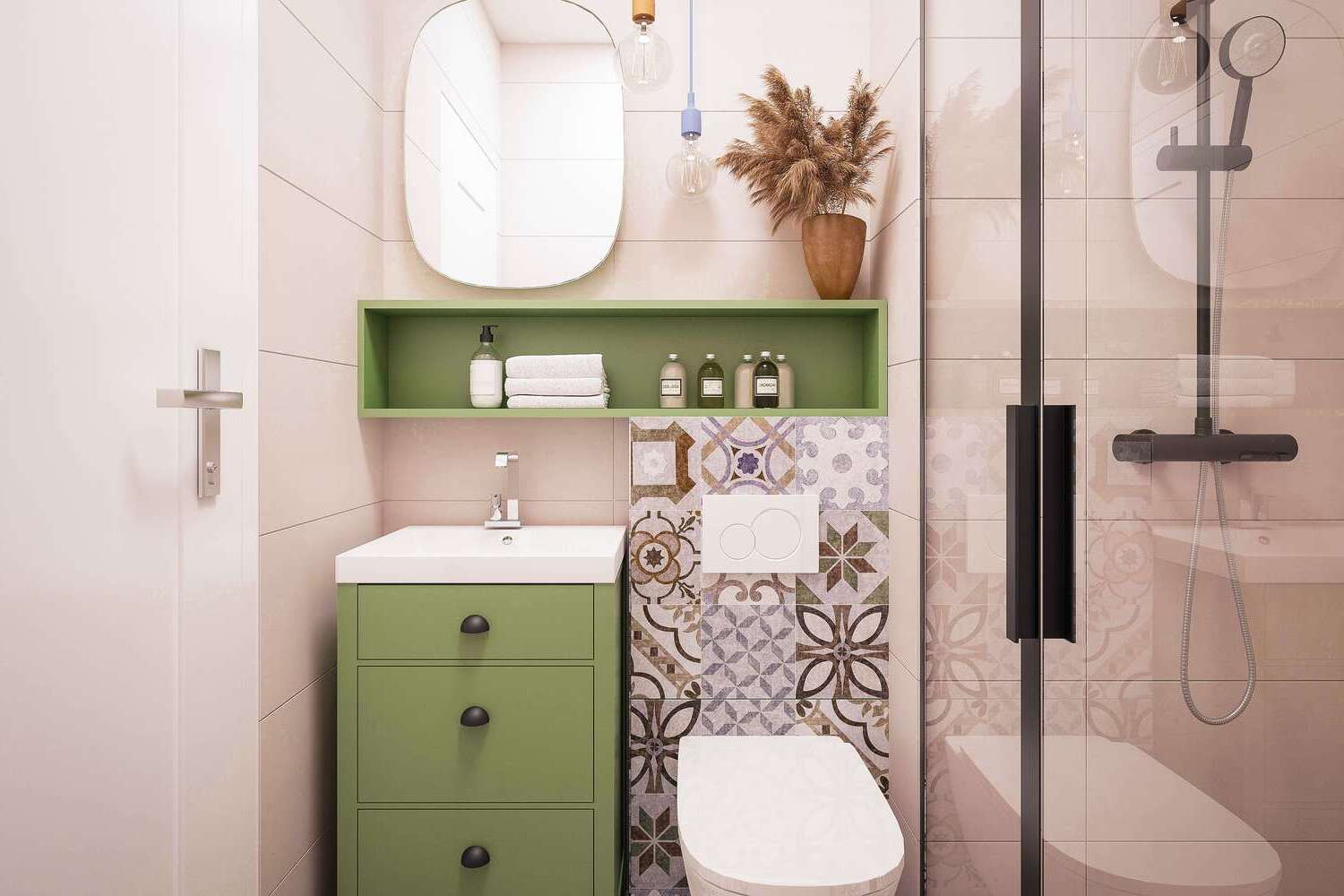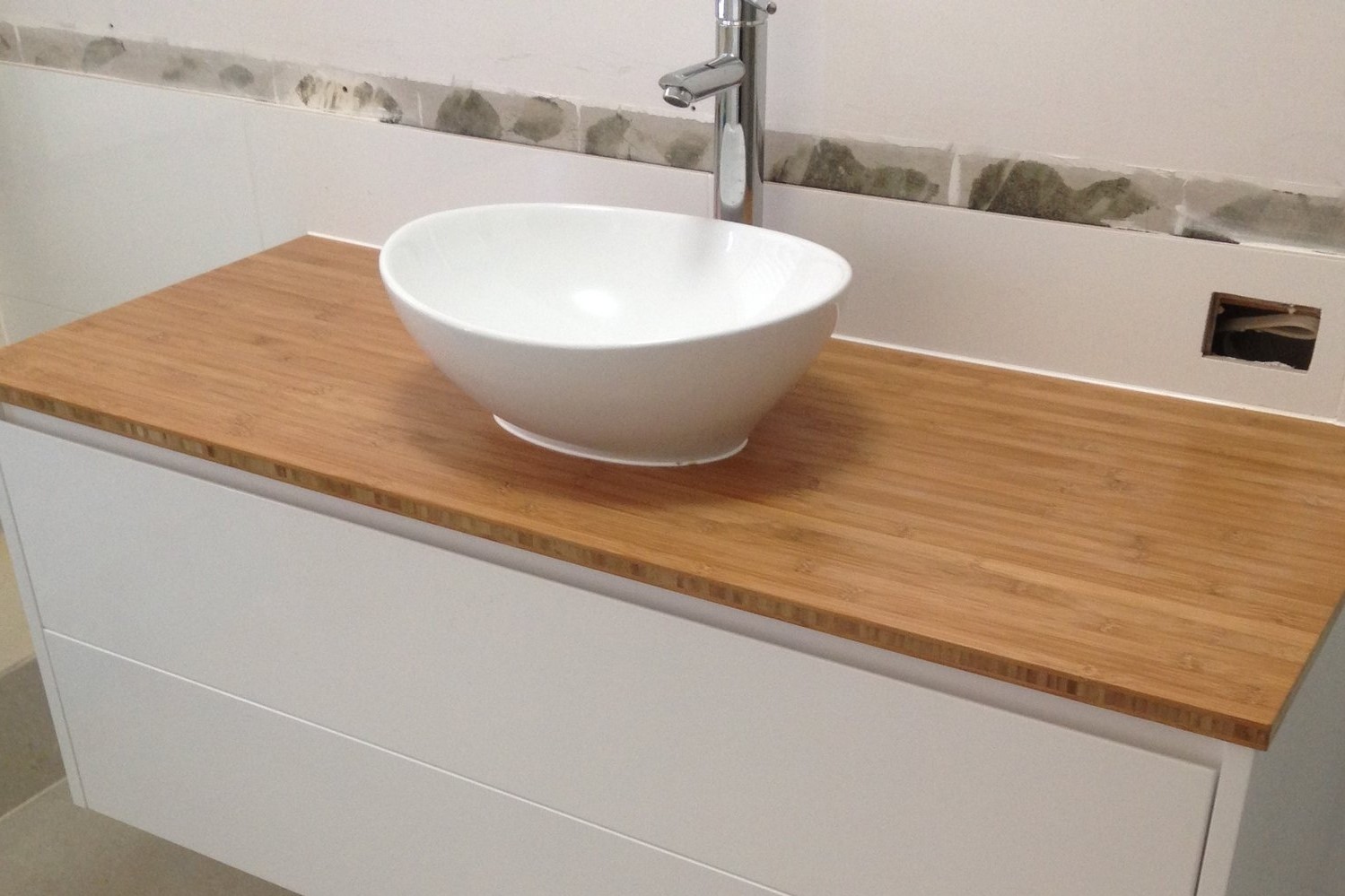Home>Ideas and Tips>How to Choose and Install the Right Bathroom Vanity with a Built-in Health Monitor


Ideas and Tips
How to Choose and Install the Right Bathroom Vanity with a Built-in Health Monitor
Modified: November 2, 2024
Learn how to choose and install the perfect bathroom vanity with a built-in health monitor. Get tips on measurements, materials, and installation steps.
(Many of the links in this article redirect to a specific reviewed product. Your purchase of these products through affiliate links helps to generate commission for Storables.com, at no extra cost. Learn more)
Choosing and installing the right bathroom vanity with a built-in health monitor can seem like a big job, but it doesn't have to be. The key is to break it down into manageable steps and understand what you need. Let's dive right in and get to the nitty-gritty of making your bathroom both stylish and functional.
Choosing the Right Bathroom Vanity
First things first, you need to measure your bathroom space. Grab a tape measure and jot down the dimensions of the area where you plan to place the vanity. Don't forget to consider door swings and other fixtures. You don't want your new vanity to block anything or make the space feel cramped. If you're doing a complete remodel, check your city's building codes to make sure your vanity size meets permit guidelines.
Next, determine the size of the vanity. Based on your measurements, decide on the dimensions that will fit comfortably. Leave enough clearance around the vanity to create a spacious and unobstructed environment. Standard height for vanity cabinets is around 32 inches, but remember, your countertop will add an inch. Standard depth is 21 inches, with the countertop adding another inch.
Now, think about your storage needs. Do you have a lot of toiletries, towels, and other bathroom essentials? If so, opt for a vanity with plenty of drawers and cabinets. More storage means less clutter, and who doesn't want that?
Decide whether you want a single or double sink. Double sinks are great for larger bathrooms and households with multiple users. Single sinks are perfect for smaller spaces. It's all about what works best for you.
When it comes to the vanity top, add an inch to the width of your vanity cabinet. For example, if your vanity cabinet is 60 inches wide, you'll want a vanity top that's 61 inches wide. Make sure the new vanity top fits properly with your existing vanity if you have one.
Consider the material of the vanity top. Popular choices include granite, quartz, and cultured marble. Granite is beautiful, durable, and resistant to scratches and heat. Quartz offers a wide range of colors, is non-porous, and highly resistant to stains and scratches. Cultured marble provides a smooth, seamless appearance with a classic marble look and low-maintenance durability.
If you're unsure about compatibility, consult a professional. A contractor or bathroom remodeling expert can provide valuable insights and recommendations based on your specific requirements.
Understanding the Components of a Bathroom Vanity
A bathroom vanity typically consists of several components:
- Vanity Cabinet: The main structure providing storage space for toiletries and other essentials. Usually has drawers and shelves.
- Countertop: The surface area where you place your sink, faucets, and other items. Can be made from materials like granite, quartz, or cultured marble.
- Sink: An essential component. Can be single or double, with types like undermount, vessel, or all-in-one.
- Faucets: Installed on the countertop, providing water supply to the sink. Available in various styles and materials like chrome, bronze, or stainless steel.
- Health Monitor Integration: Features like blood pressure monitors, heart rate sensors, or smart mirrors with health tracking capabilities. Integrated into the countertop or cabinet design.
Installing the Bathroom Vanity
Installing a bathroom vanity involves several steps:
- Preparation: Ensure everything will fit in your bathroom. Disconnect the plumbing to avoid costly water damage.
- Removing the Old Vanity: Disconnect plumbing and electrical connections. Remove screws or nails holding the old vanity. Carefully lift out the old vanity for disposal.
- Repairing the Wall: Repair any wall damage caused by removing the old vanity. Patch holes and ensure the wall is level and secure.
- Installing the New Vanity: Place the new vanity in position and ensure it's level. Secure it to the wall studs or floor. For wall-mounted vanities, ensure it's securely attached to the wall.
- Reconnecting Plumbing: Reconnect plumbing lines to the new sink. Ensure all connections are tight to prevent leaks.
- Installing Faucets: Follow manufacturer’s instructions for installing faucets. Ensure they're securely attached and functioning properly.
- Adding Health Monitor Features: Follow manufacturer’s instructions for installing health monitor features. Connect sensors or screens into the countertop or cabinet design.
- Final Touches: Add finishing touches like mirrors, lighting fixtures, or decorative items around the vanity area.
Integrating a Health Monitor into Your Bathroom Vanity
Integrating a health monitor into your bathroom vanity can enhance its functionality. Here’s how:
- Choose the Right Features: Select features that align with your health monitoring needs, like blood pressure monitors, heart rate sensors, or smart mirrors.
- Design Considerations: Decide how to integrate these features into your vanity design. Embed them into the countertop or as part of the cabinet.
- Installation Process: Follow manufacturer’s instructions for installing these features. Connect sensors or screens into the countertop or cabinet.
- User-Friendly Interface: Ensure the interface is user-friendly and easy to navigate. This makes it convenient for regular use.
- Maintenance and Upgrades: Regularly check and maintain the health monitoring features. Consider upgrading as technology advances.
FAQs About Installing a Bathroom Vanity
Here are some frequently asked questions:
- Can You Install a Bathroom Vanity Yourself?
Yes, if you're confident in your ability to complete simple plumbing tasks like reconnecting faucets and water lines. You might need another set of hands to move the vanity if it's heavy. - Do You Need a Plumber to Install a Bathroom Vanity?
Only if you're not comfortable with disconnecting and reconnecting plumbing fixtures or if significant changes are needed to the pipes. If updating your home’s plumbing, do it before installing the new vanity. - Does Bathroom Vanity Need to Be Attached to Wall?
Yes, for safety, it's essential to secure your bathroom vanity to a wall, studs, or the floor. Not securing it could be a tripping hazard, injuring you or a family member and ripping the plumbing from the wall. - How Are Bathroom Vanities Attached?
Most often, they're screwed directly into wall studs or anchored to the wall.
By following these steps and guidelines, you can confidently choose and install the right bathroom vanity with built-in health monitor features. Measure carefully, consider storage needs, select durable materials, and ensure proper installation for a harmonious and functional bathroom space that meets your needs and preferences.
Was this page helpful?
At Storables.com, we guarantee accurate and reliable information. Our content, validated by Expert Board Contributors, is crafted following stringent Editorial Policies. We're committed to providing you with well-researched, expert-backed insights for all your informational needs.
















0 thoughts on “How to Choose and Install the Right Bathroom Vanity with a Built-in Health Monitor”